Forums
- Forums
- Duggy's Reference Hangar
- Misc Library
- Avro Canada CF-100 Canuck
Avro Canada CF-100 Canuck
Post a reply
- Go to Previous topic
- Go to Next topic
- Go to Welcome
- Go to Introduce Yourself
- Go to General Discussion
- Go to Screenshots, Images and Videos
- Go to Off topic
- Go to Works in Progress
- Go to Skinning Tips / Tutorials
- Go to Skin Requests
- Go to IJAAF Library
- Go to Luftwaffe Library
- Go to RAF Library
- Go to USAAF / USN Library
- Go to Misc Library
- Go to The Ops Room
- Go to Made in Germany
- Go to Campaigns and Missions
- Go to Works in Progress
- Go to Juri's Air-Raid Shelter
- Go to Campaigns and Missions
- Go to Works in Progress
- Go to Skinpacks
- Go to External Projects Discussion
- Go to Books & Resources
-
7 years agoSat Jan 27 2024, 10:45amDuggy
 Main AdminDesign and development
Main AdminDesign and development
In the early 1950s, Canada needed an all-weather interceptor (fighter) able to patrol the vast areas of Canada's north and operate in all weather conditions. The two-seat fighter crewed by a pilot and navigator was designed with two powerful engines and an advanced radar and fire control system housed in its nose that enabled it to fly in all-weather or night conditions.
Design of the XC-100 to meet a Royal Canadian Air Force (RCAF) specification for an all-weather fighter was initiated at Avro Canada in October 1946. Chief Engineer Edgar Atkin's work on the CF-100 was subsequently passed to John Frost (formerly of de Havilland) who, along with Avro's Chief Aerodynamacist Jim Chamberlin, reworked the original fuselage design. The CF-100 Mark 1 prototype, "18101," emerged from the factory, painted gloss black overall with white lightning bolts running down the fuselage and engines. The CF-100 prototype flew its maiden flight on 19 January 1950 with Gloster Aircraft Company Chief Test Pilot Squadron Leader Bill Waterton (on loan from Gloster, then also part of the Hawker Siddeley group) at the controls. The Mark 1 was powered by two Rolls-Royce Avon RA 3 turbojets with 28.9 kN (2,950 kgp / 6,500 lbf) thrust each.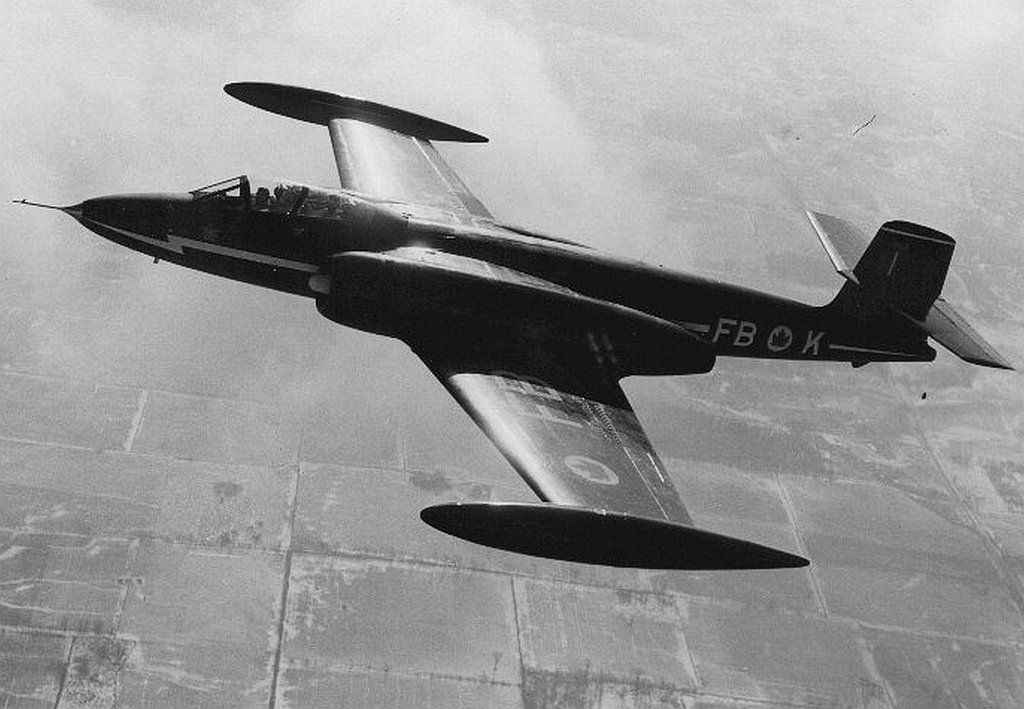
The second prototype, serial number 18102, was also powered by Rolls-Royce Avons, although subsequent pre-production and production series aircraft used the Avro Orenda turbojet. Five pre-production Mk 2 test aircraft (serial numbers 18103-18107) were produced, all fitted with Orenda 2 engines; one was fitted with dual controls and designated a Mk 2T trainer. The first production version, designated Mk 3, incorporated the APG-33 radar and was armed with eight .50 caliber Browning M3 machine guns. The Mk 3CT and Mk 3DT were again dual control versions supplied to operational training units.
A CF-100 arrived at Eglin AFB, Florida, in mid-January 1955 for cold-weather tests in the climatic hangar. A seven-man RCAF team, headed by Flight Lieutenant B. D. Darling, which had previously conducted tests at Namao Air Base, Alberta, were part of the climatic detachment of Central Experimental and Proving Establishment. Tests were to begin in February.
In March 1956, four CF-100 Canucks were sent to Eglin AFB for comparative armament trials, and flown by USAF crews. The operational suitability tests, dubbed Project Banana Belt, were carried out by the 3241st Test Group (Interceptor) of the APGC's Air Force Operational Test Center, in conjunction with a project team from the Royal Canadian Air Force.
Production
In September 1950, the RCAF ordered 124 Mk 3s, the first entering service in 1953. These were armed with eight .50 caliber machine guns. The definitive rocket-armed Mk 4A was based on the prototype Mk 4 (a modified Mk 3), which first flew on 11 October 1952. The nose housed the much larger APG-40 radar with wingtip pods, each containing up to 29 Mk 4/Mk 40 "Mighty Mouse" Folding-Fin Aerial Rocket in addition to the guns. As the last 54 of an order for the Mk 3 were changed into the Mk 4 in 1954, total orders for the Mk 4 rose to 510. The Mk 4B version had more powerful Orenda 11s.
Five versions, or marks, were produced, ending, from 1955 onwards, with the high-altitude Mk 5 that featured a 1.06 m (3 ft 6 in)-longer wingtip and enlarged tailplane, along with removal of the machine guns. The proposed Mk 6 was to have mounted Sparrow II missiles and been powered by afterburning Orenda 11IR engines in an effort to provide an "interim" fighter prior to the introduction of the Avro Canada CF-105 Arrow. A projected transonic swept-wing CF-103 was built in mock-up form in 1951, but was considered obsolescent even before the CF-100's demonstrated ability to exceed the speed of sound in a dive. On 18 December 1952, Squadron Leader Janusz ?urakowski, the Avro company chief development test pilot, took the CF-100 Mk 4 prototype to Mach 1.0 in a dive from 9,100 m (30,000 ft), the first straight-winged jet aircraft to achieve controlled supersonic flight.
Operational history
The Canuck was affectionately known in the RCAF as the "Clunk" because of the noise the front landing gear made as it retracted into its well after takeoff. Its less-attractive nickname was the "Lead Sled", a reference to its heavy controls and general lack of maneuverability, a nickname it shared with a number of other 1950s aircraft. Others included CF-Zero, the Zilch, and the Beast, all references to an aircraft many pilots considered less glamorous than RCAF day fighters like the Canadair Sabre.
The aircraft operated under the US/Canadian North American Air Defense Command (NORAD) to protect North American airspace from Soviet intruders such as nuclear-armed bombers. Additionally, as part of the North Atlantic Treaty Organization (NATO), four Canuck squadrons were based in Europe with 1 Air Division from 1956?1962, and were for some time the only NATO fighters capable of operating in zero visibility and poor weather conditions.
When the Korean War started, the USAF was in urgent need of a jet-propelled, all-weather, interdiction/surveillance aircraft. The urgency was so great that the USAF was willing to consider two foreign designs: the CF-100 and the English Electric Canberra. The CF-100 was rejected because of insufficient range and payload. The English Electric design was selected and developed into the Martin B-57 Canberra.
The CF-100 served with nine RCAF squadrons at its peak in the mid-1950s. Four of these squadrons were deployed to Europe from late 1956?1962 under the NIMBLE BAT ferry program, replacing some NATO RCAF squadrons equipped with Canadair Sabre day fighters to provide all-weather defense against Soviet intruders. Canucks flying at home retained natural metal finish, but those flying overseas were given a British-style disruptive camouflage scheme: dark sea gray and green on top, light sea gray on the bottom.
During his Avro Canada years, the Chief Development Pilot, S/L ?urakowski, continued to fly as an aerobatic display pilot, with spectacular results, especially at the 1955 Farnborough Airshow where he displayed the CF-100 in a "falling-leaf." He was acclaimed again as the "Great ?ura" by many aviation and industry observers who could not believe a large, all-weather fighter could be put through its paces so spectacularly. His performance led to Belgium purchasing the CF-100.
In its lifetime, 692 CF-100s of different variants were produced, including 53 aircraft delivered to the Belgian Air Force. Although originally designed for only 2,000 hours, it was found that the Canuck's airframe could serve for over 20,000 hours before retirement. Consequently, though it was replaced in its front line role by the CF-101 Voodoo, the Canuck served with 414 Squadron of the Canadian Forces at CFB North Bay, Ontario, until 1981, in reconnaissance, training and electronic warfare roles. After the CF-100 was retired, a number of aircraft still remain across Canada (and elsewhere) as static displays.
Variants
CF-100 Mk 1 : The first two prototypes.
CF-100 Mk 1P : Proposed photo-reconnaissance version. Not built.
CF-100 Mk 2 : Ten pre-production aircraft.
CF-100 Mk 2T : Dual control training version of the CF-100 Mk 2. Two built.
CF-100 Mk 3 : Two-seat all-weather long-range interceptor fighter aircraft. First production version for the RCAF. 70 built.
CF-100 Mk 3A : CF-100 Mk 3 sub-type, powered by two Orenda 2 turbojet engines. 21 built.
CF-100 Mk 3B : CF-100 Mk 3 sub-type, powered by two Orenda 8 turbojet engines. 45 built.
CF-100 Mk 3CT : One CF-100 Mk 3 converted into a dual control training aircraft. Later redesignated CF-100 Mk 3D.
CF-100 Mk 4 : Two-seat all-weather long-range interceptor fighter aircraft. One pre-production aircraft.
CF-100 Mk 4A : CF-100 Mk 4 sub-type, powered by two Orenda 9 turbojet engines. 137 built.
CF-100 Mk 4B : CF-100 Mk 4 sub-type, powered by two Orenda 11 turbojet engines. 141 built.
CF-100 Mk 4X : Proposed version of the CF-100 Mk 4. Not built.
CF-100 Mk 5 : Two-seat all-weather long-range interceptor fighter aircraft, powered by two Orenda 11 or Orenda 14 turbojet engines. 332 built.
CF-100 Mk 5D : Small number of CF-100 Mk 5s converted into ECM (Electronic Countermeasures), EW (Electronic Warfare) aircraft.
CF-100 Mk 5M : Small number of CF-100 Mk 5s equipped to carry the AIM-7 Sparrow II air-to-air missiles.
CF-100 Mk 6 : Proposed version armed with the AIM-7 Sparrow II air-to-air missile. Not built.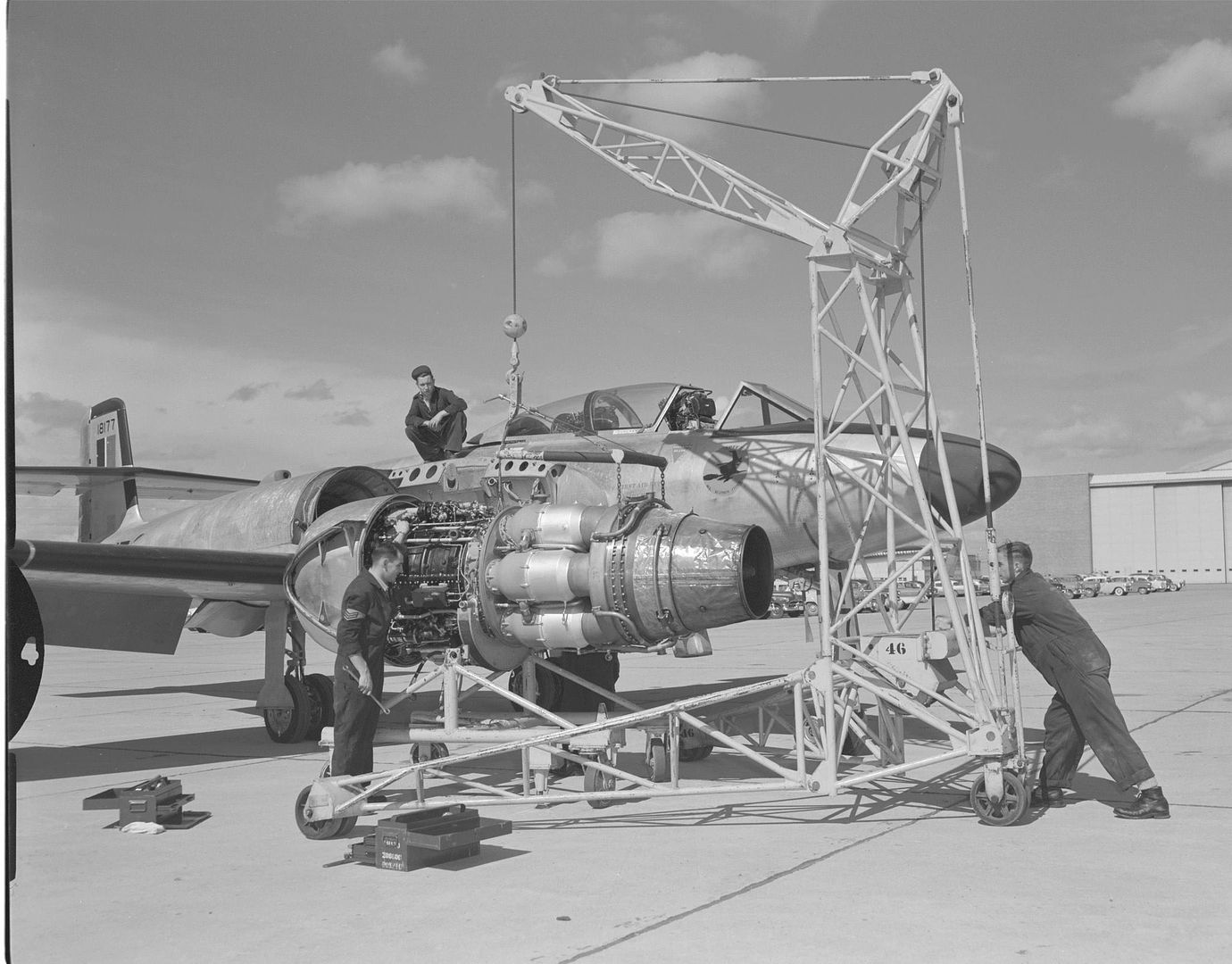
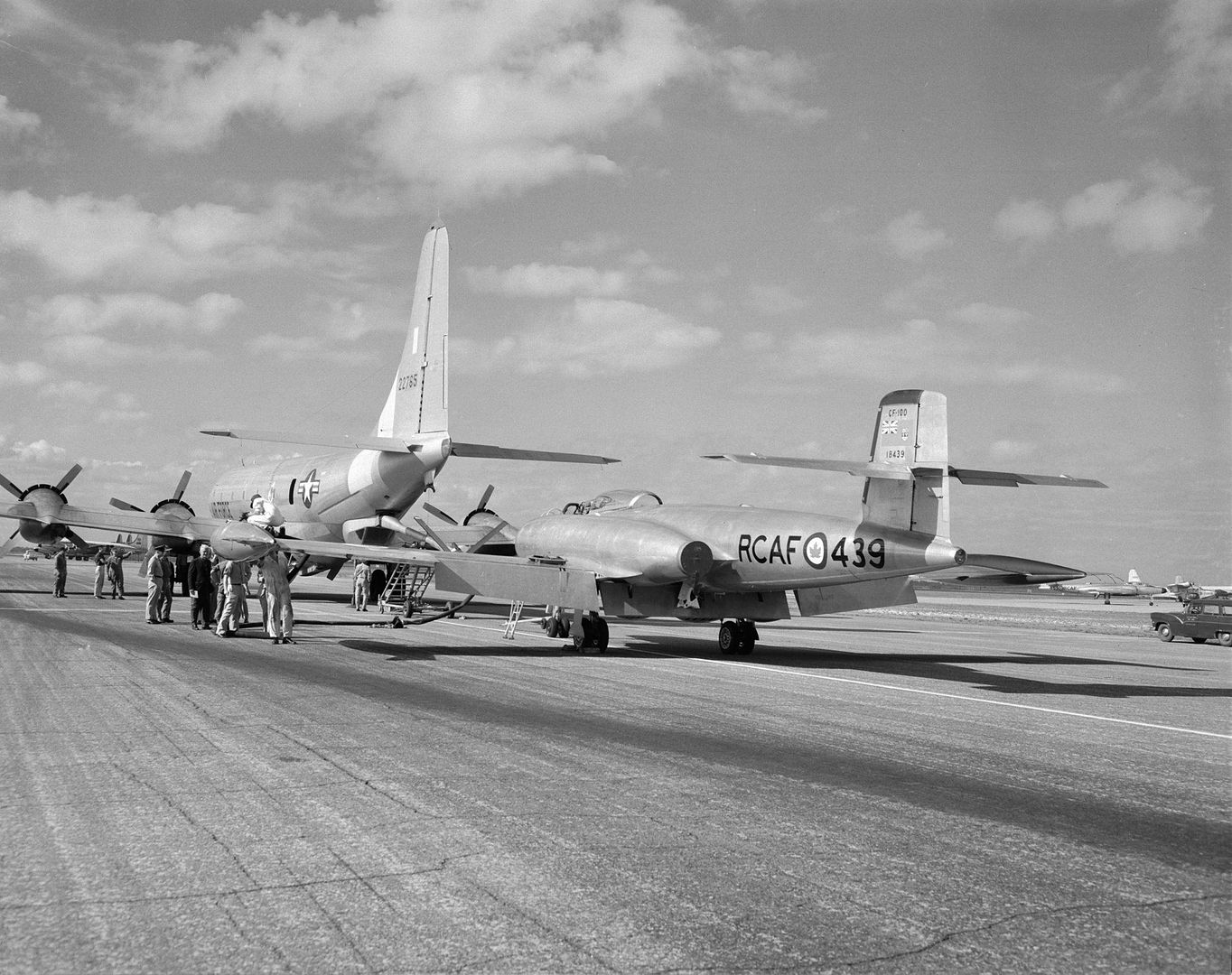
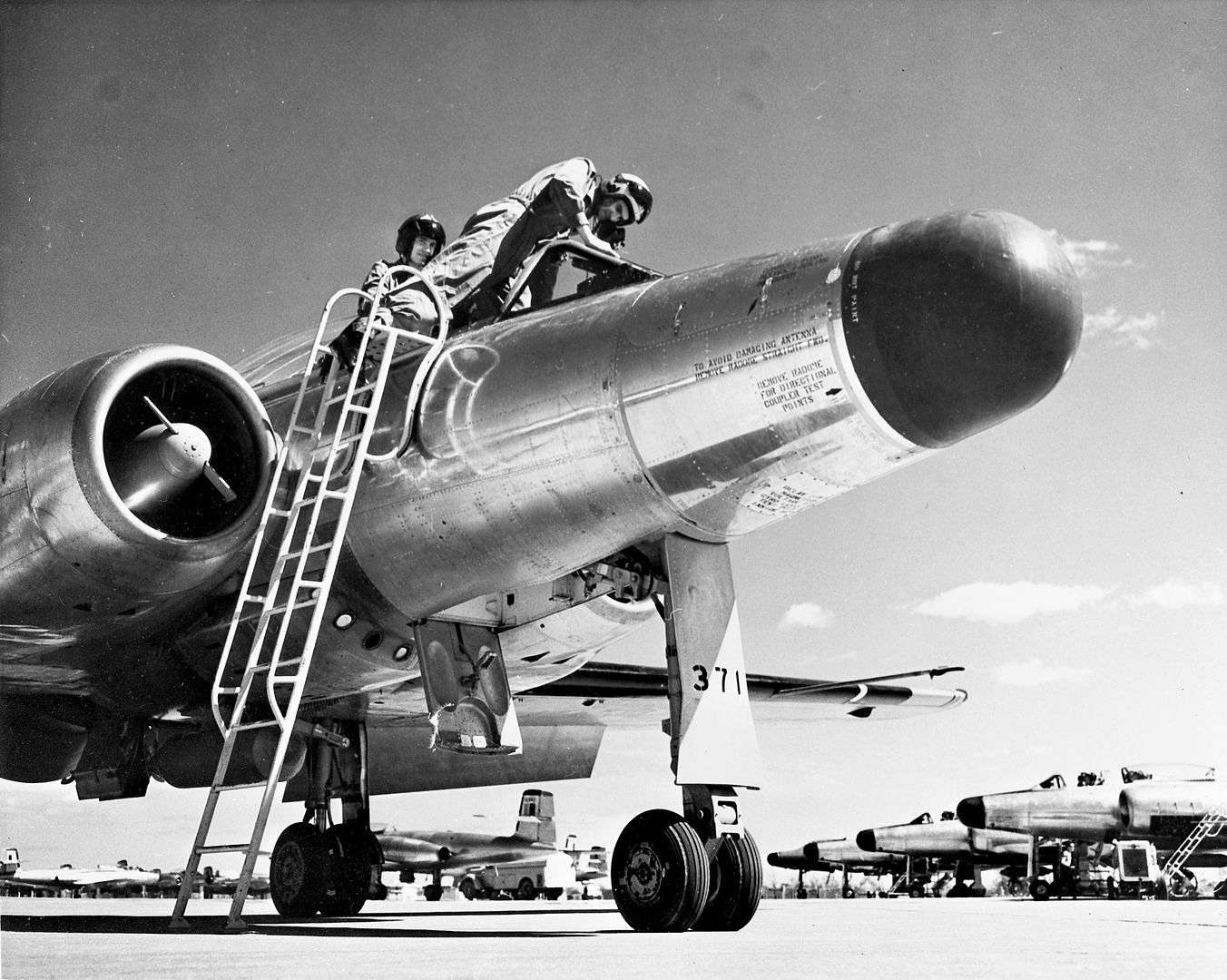
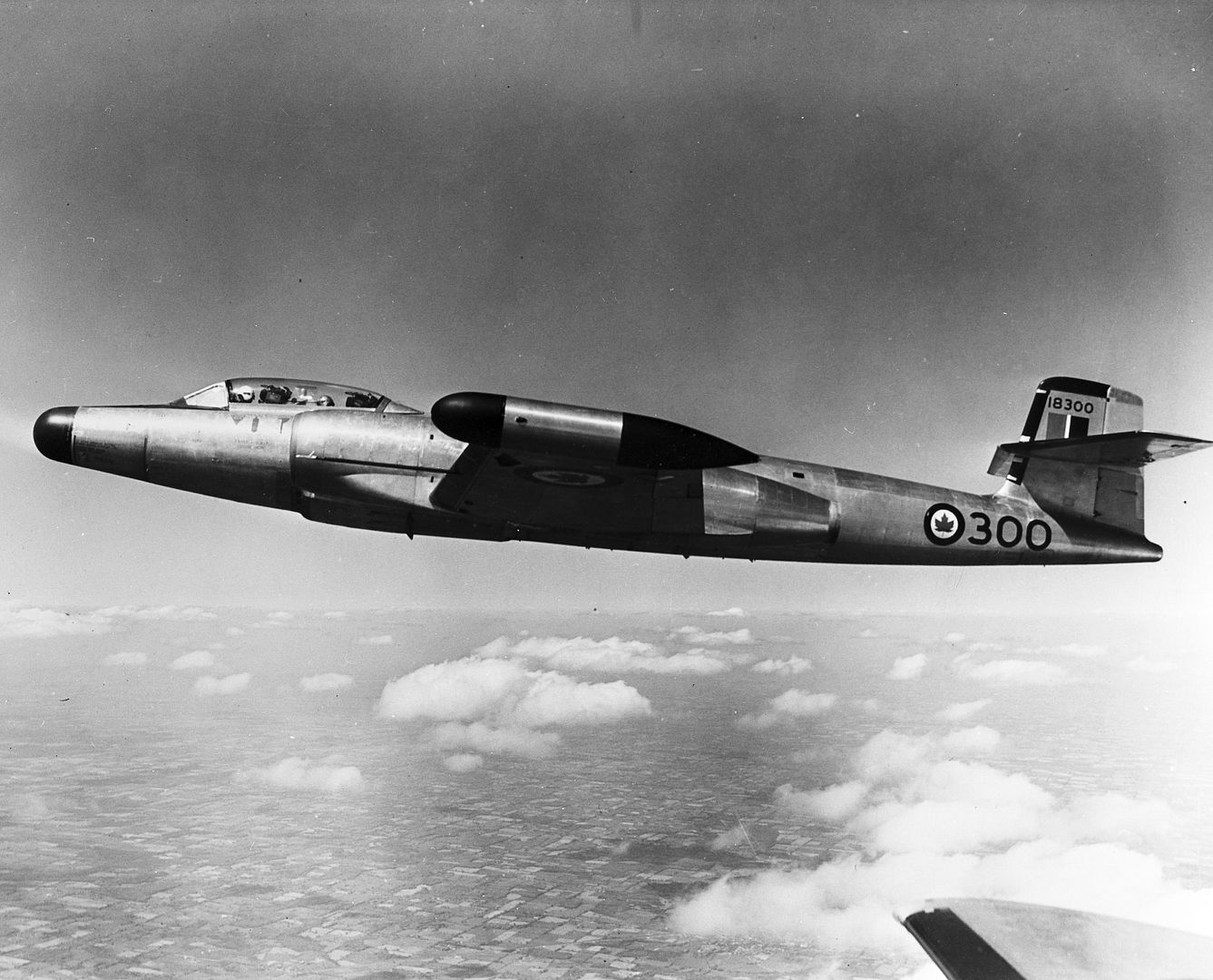

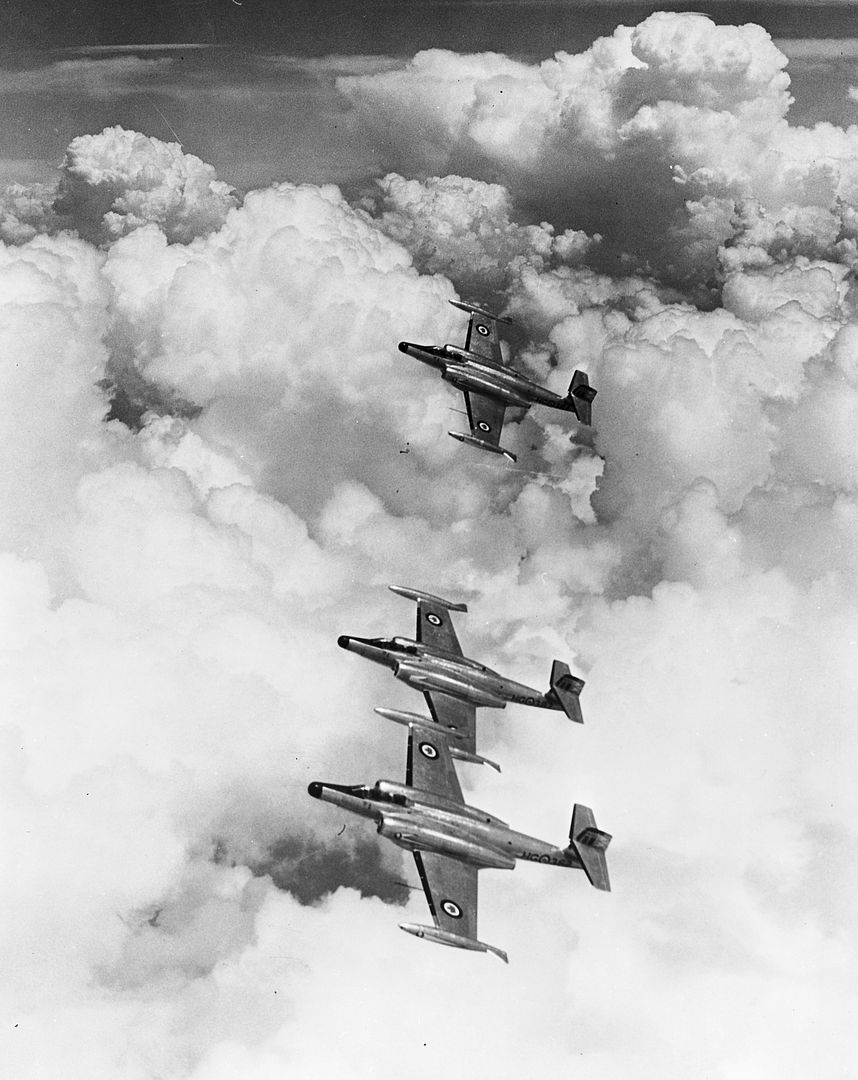

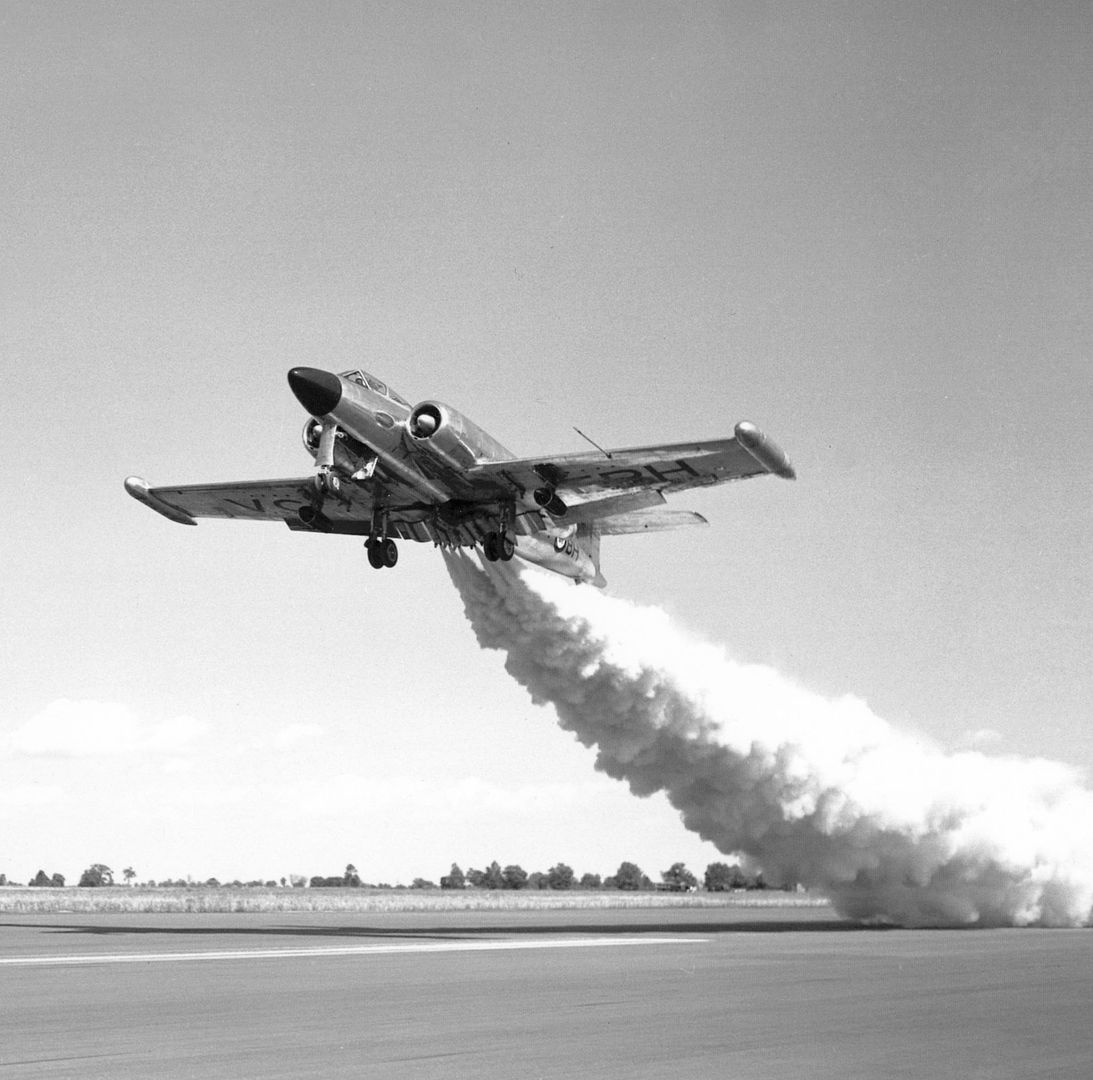
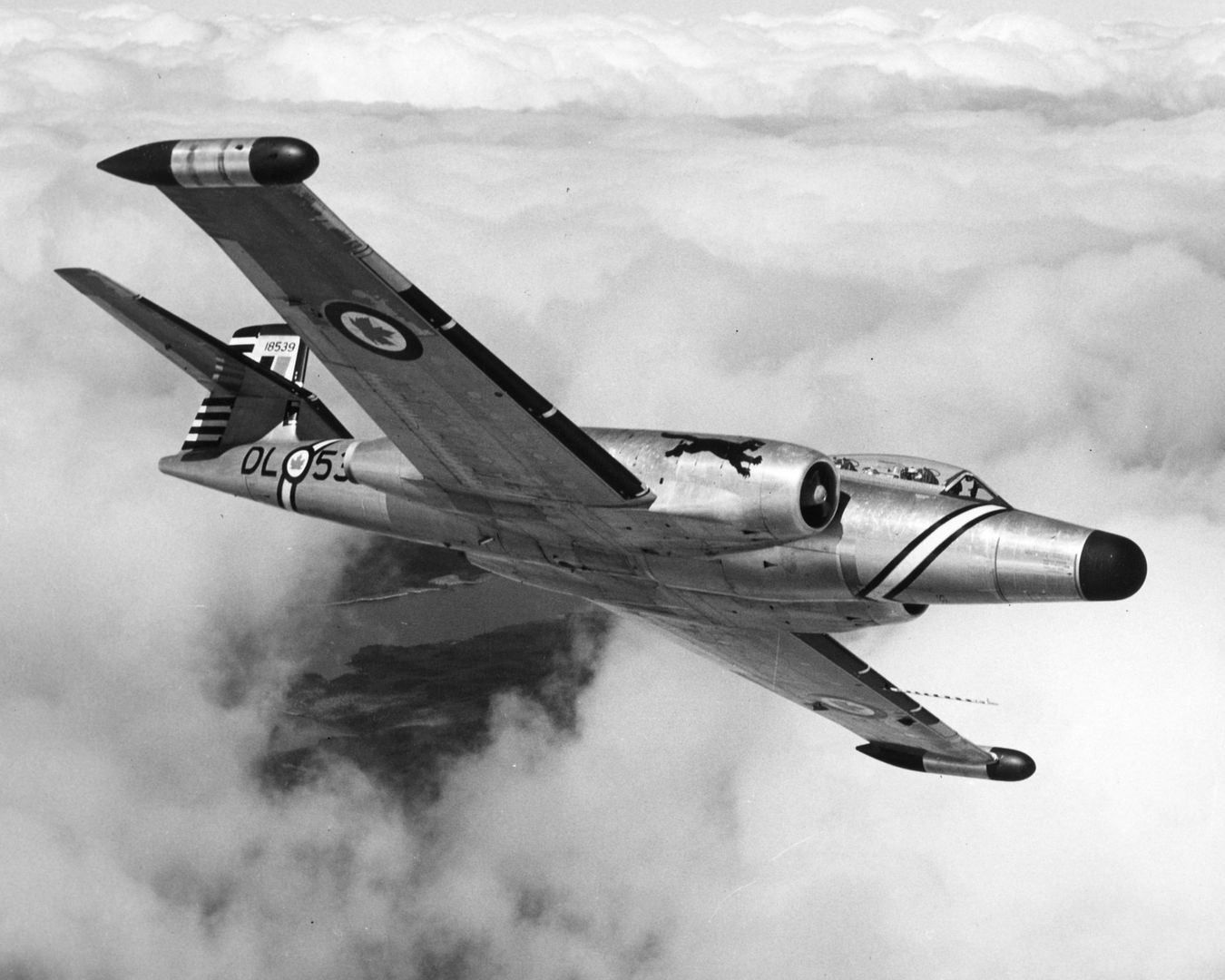
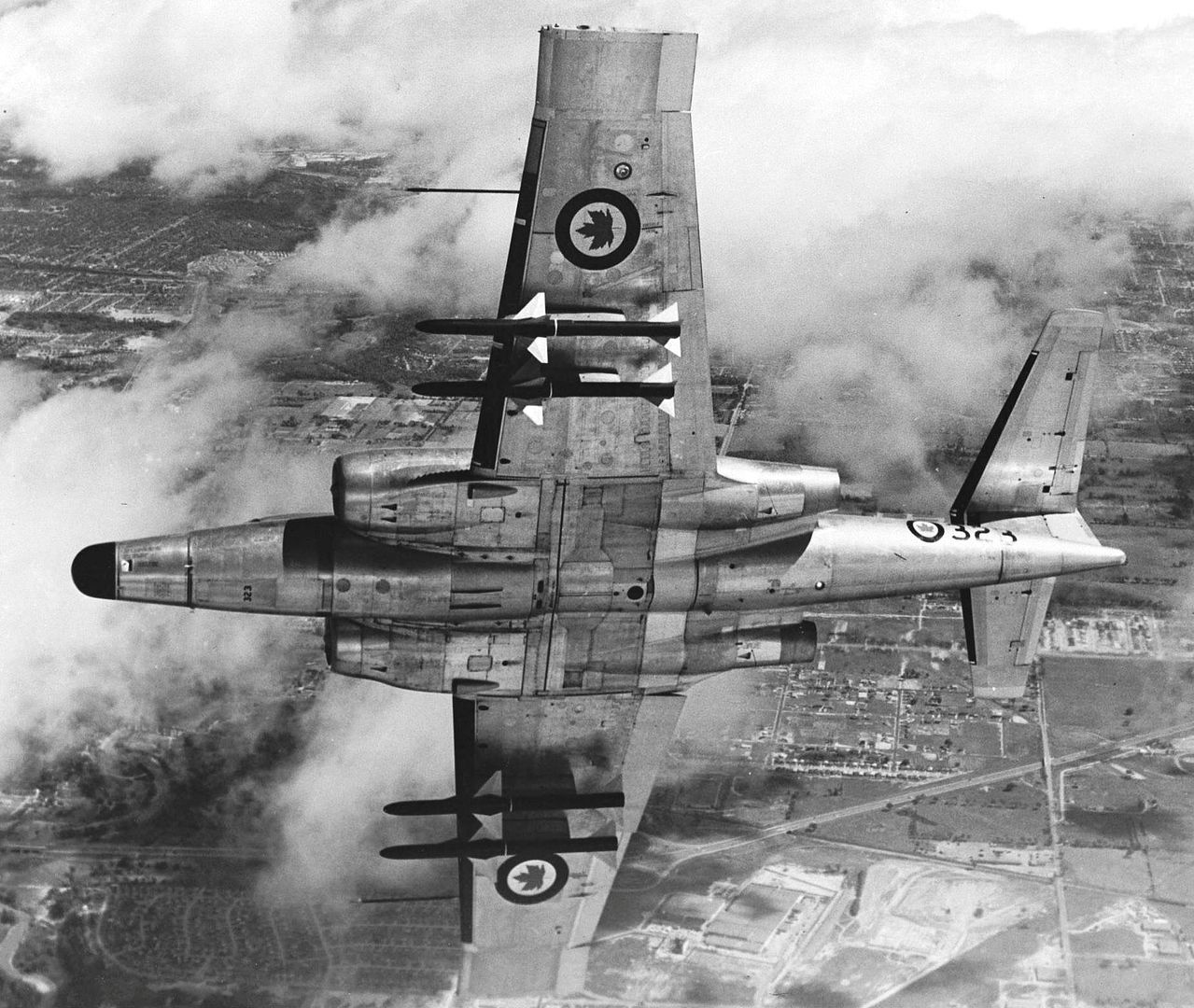
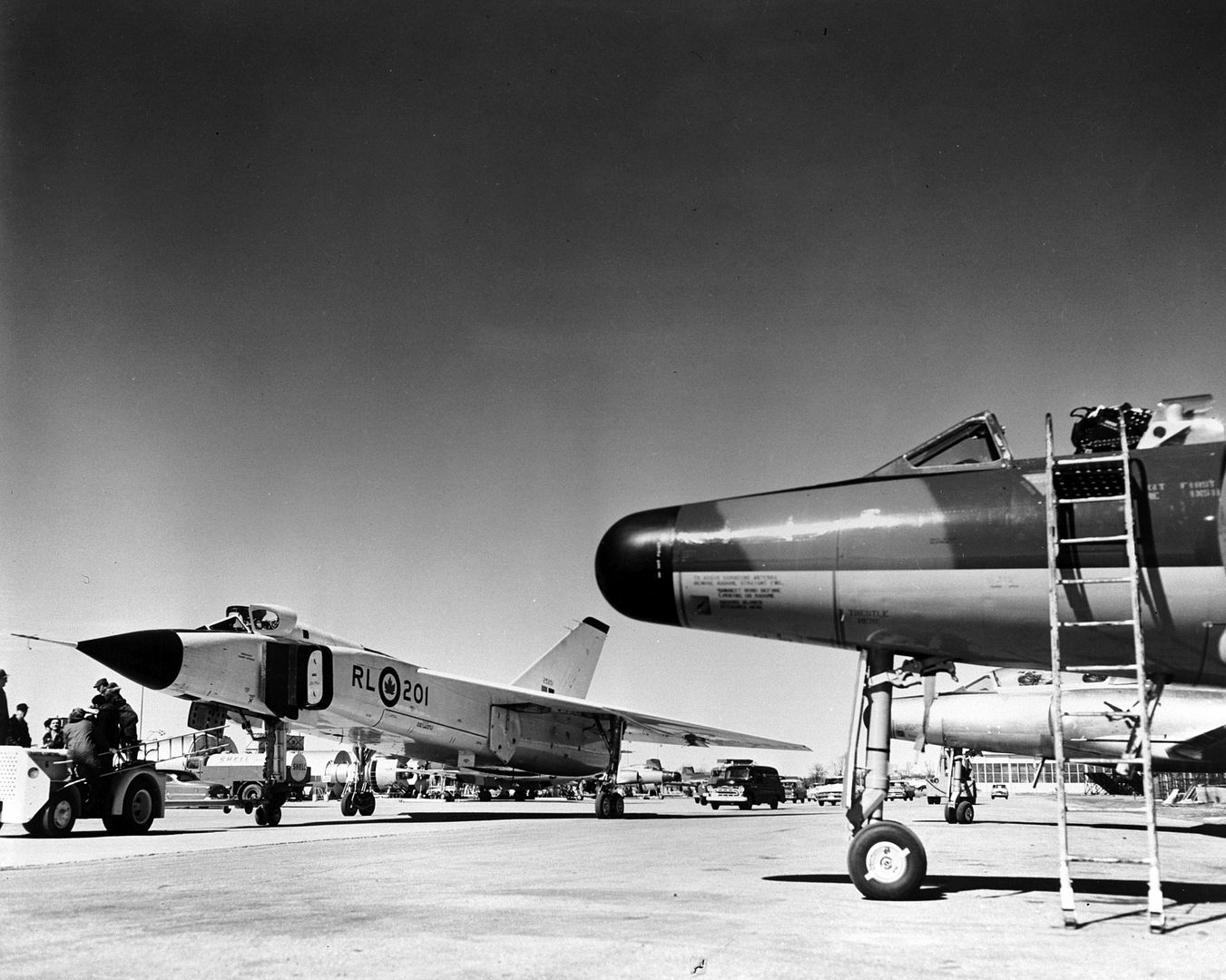
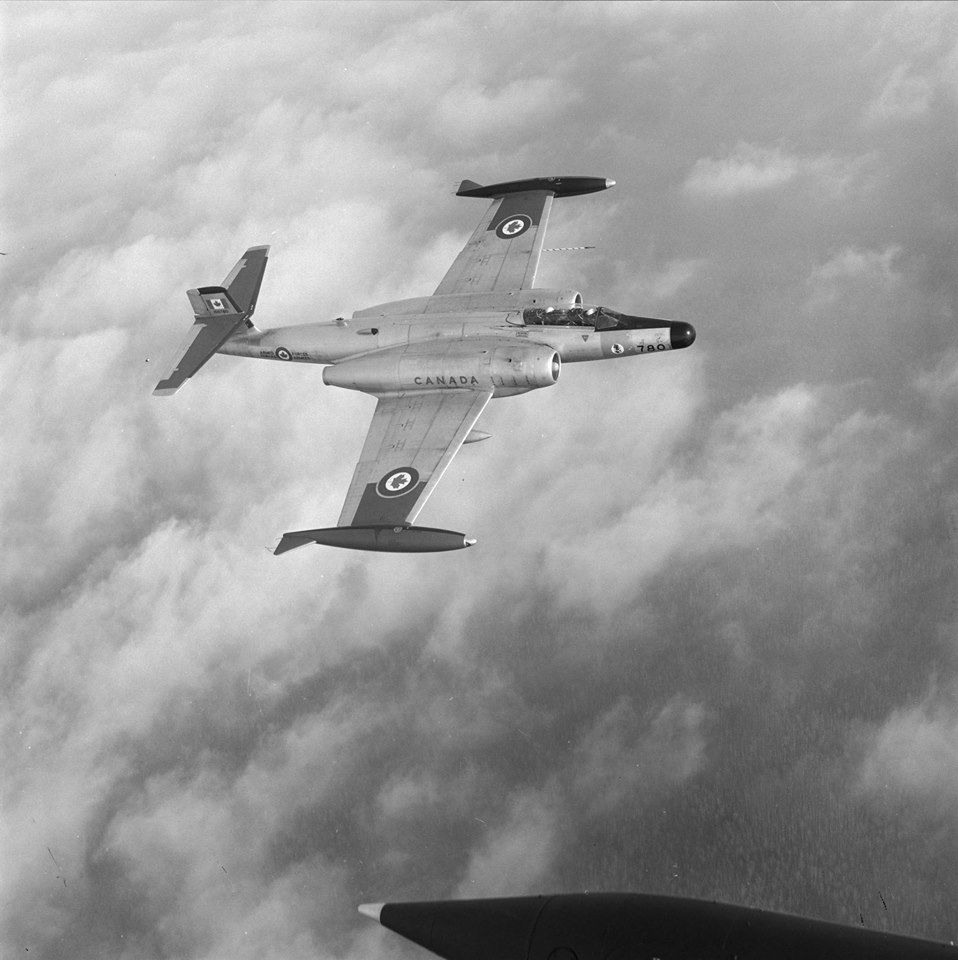

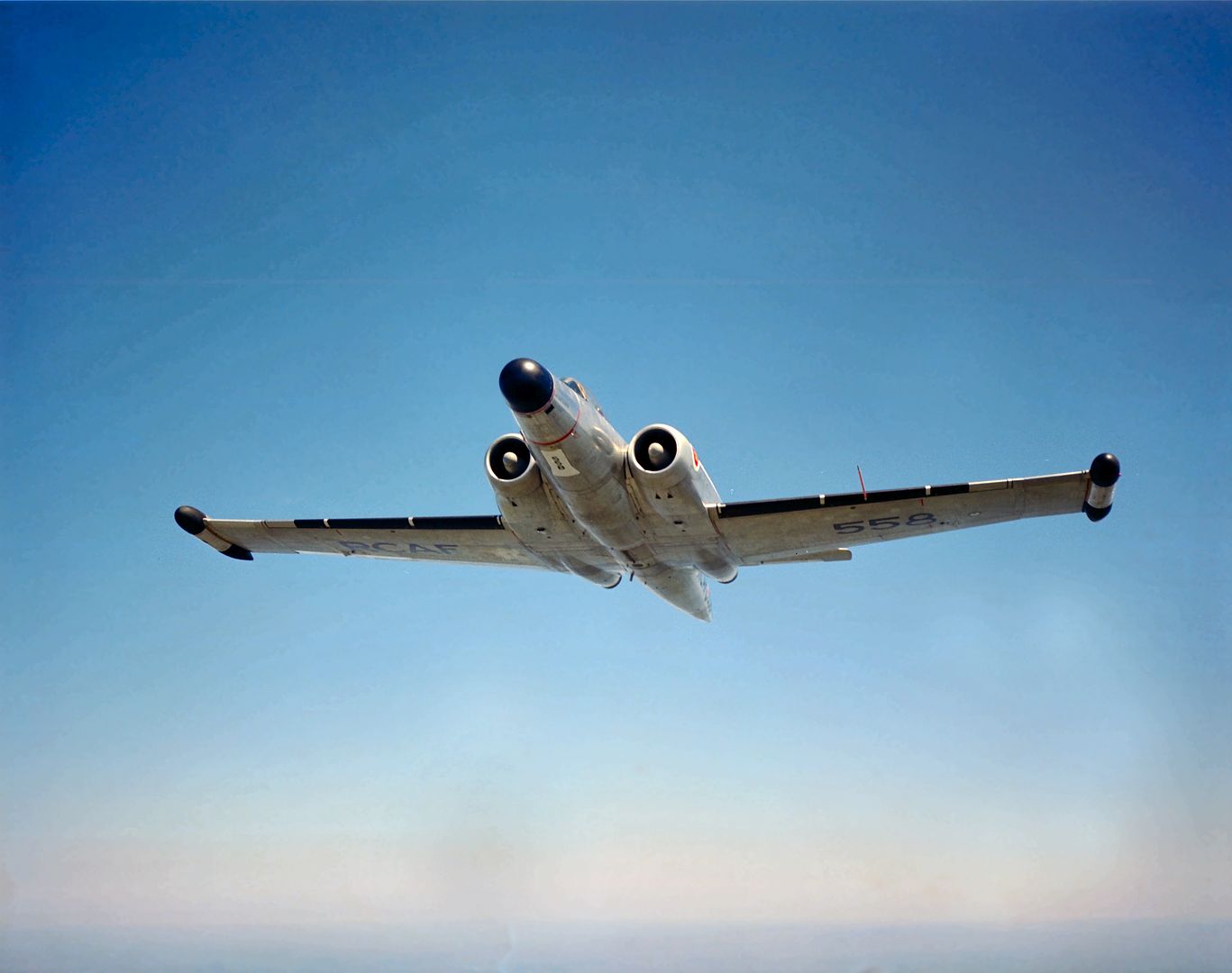
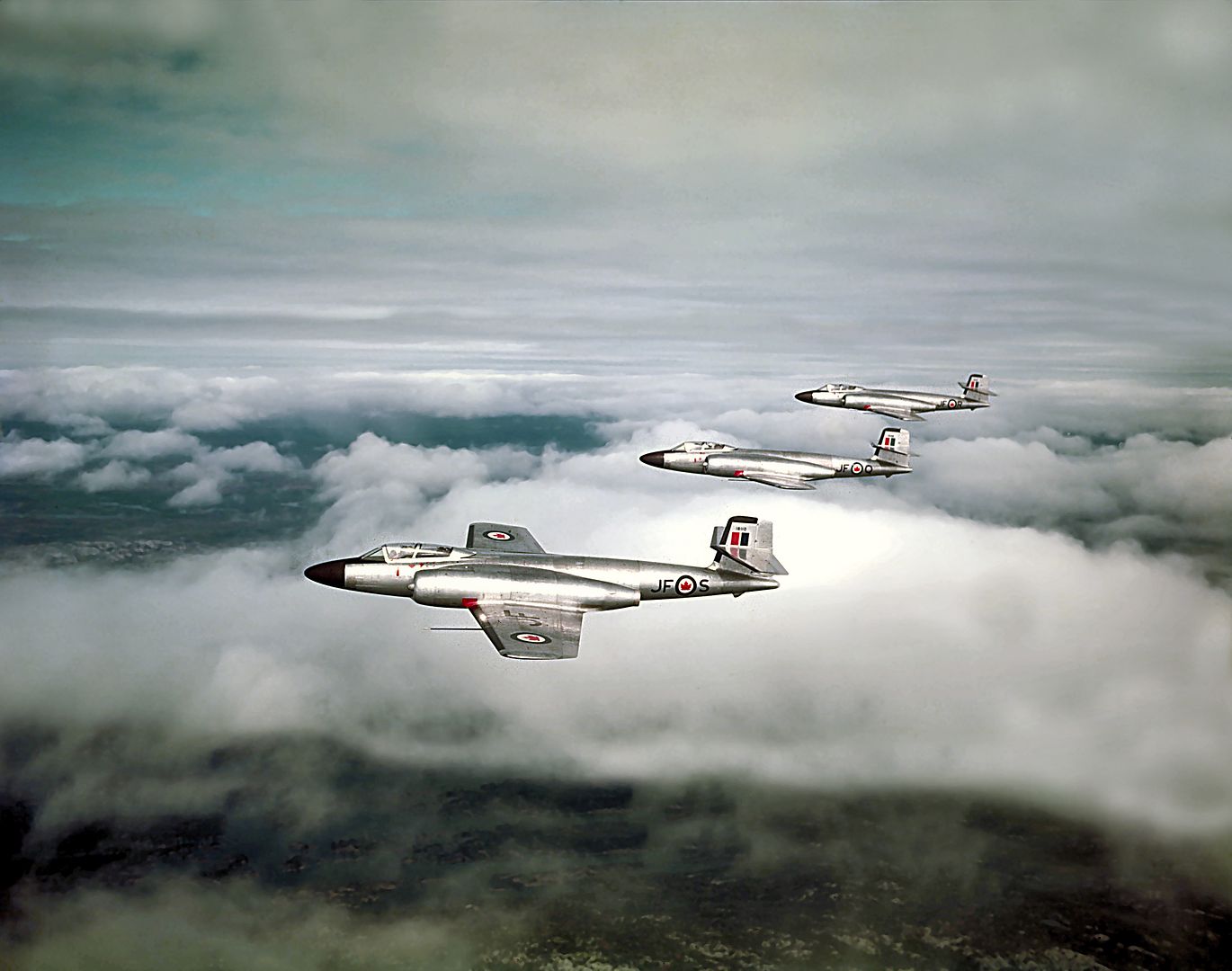
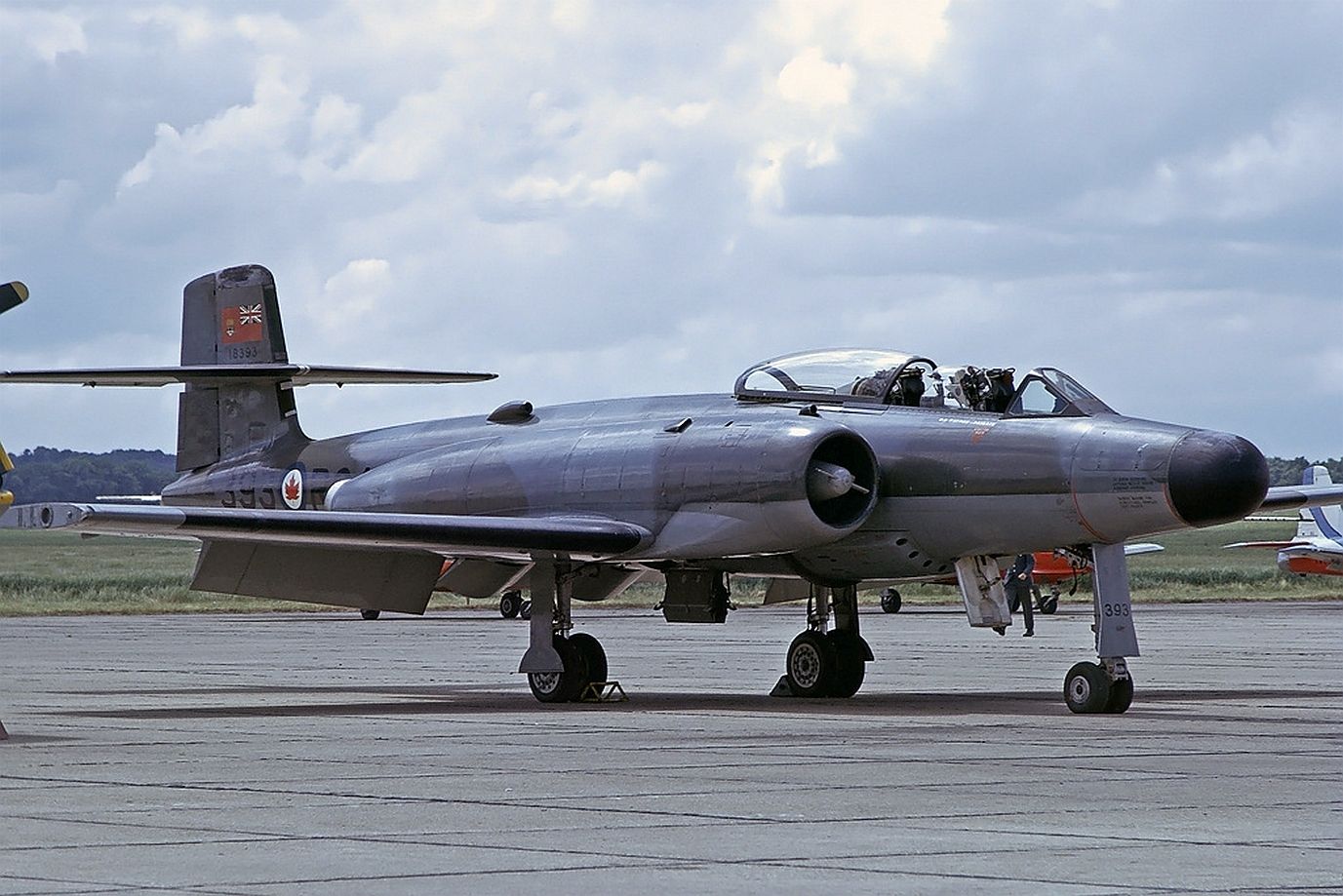
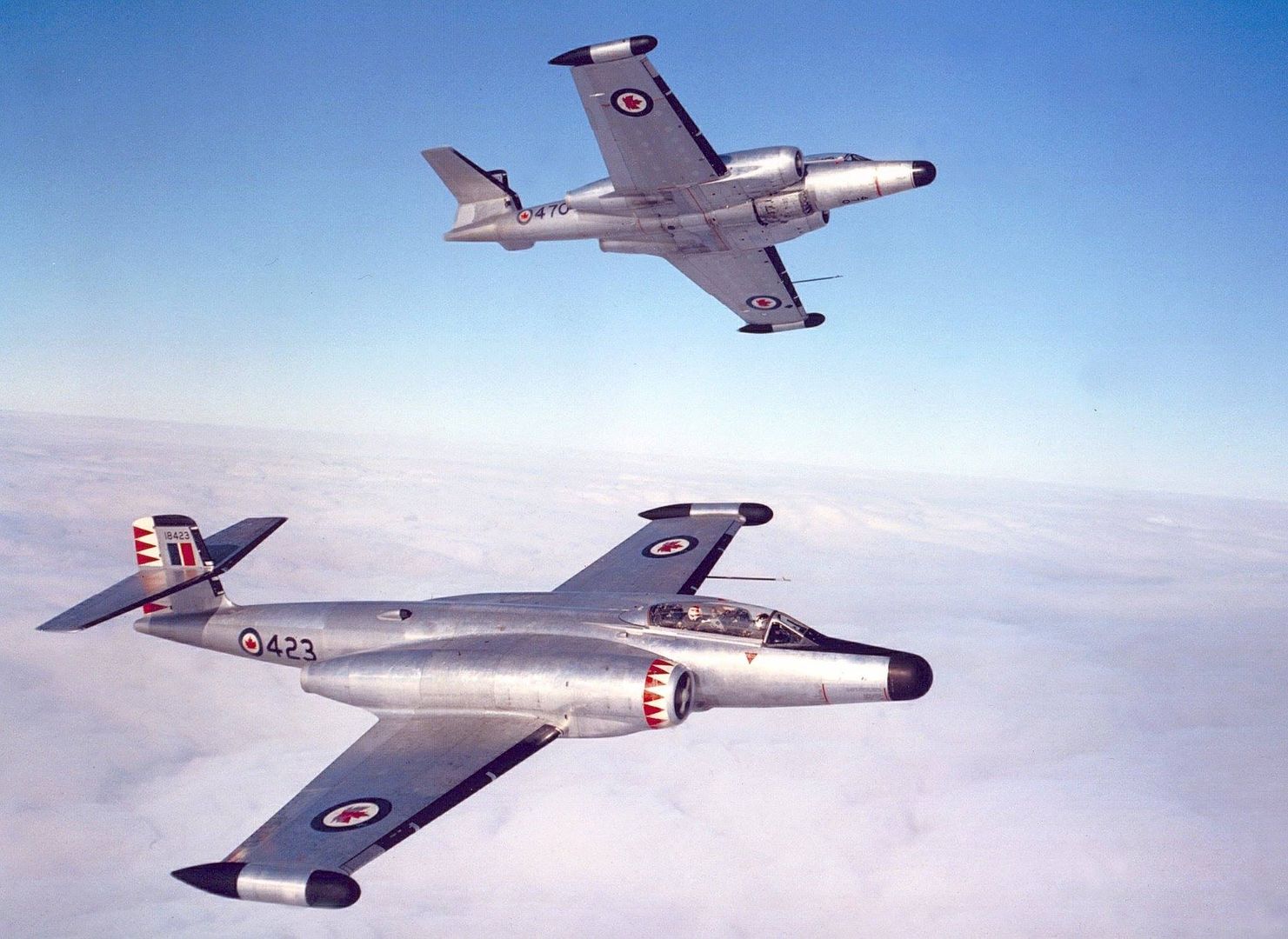
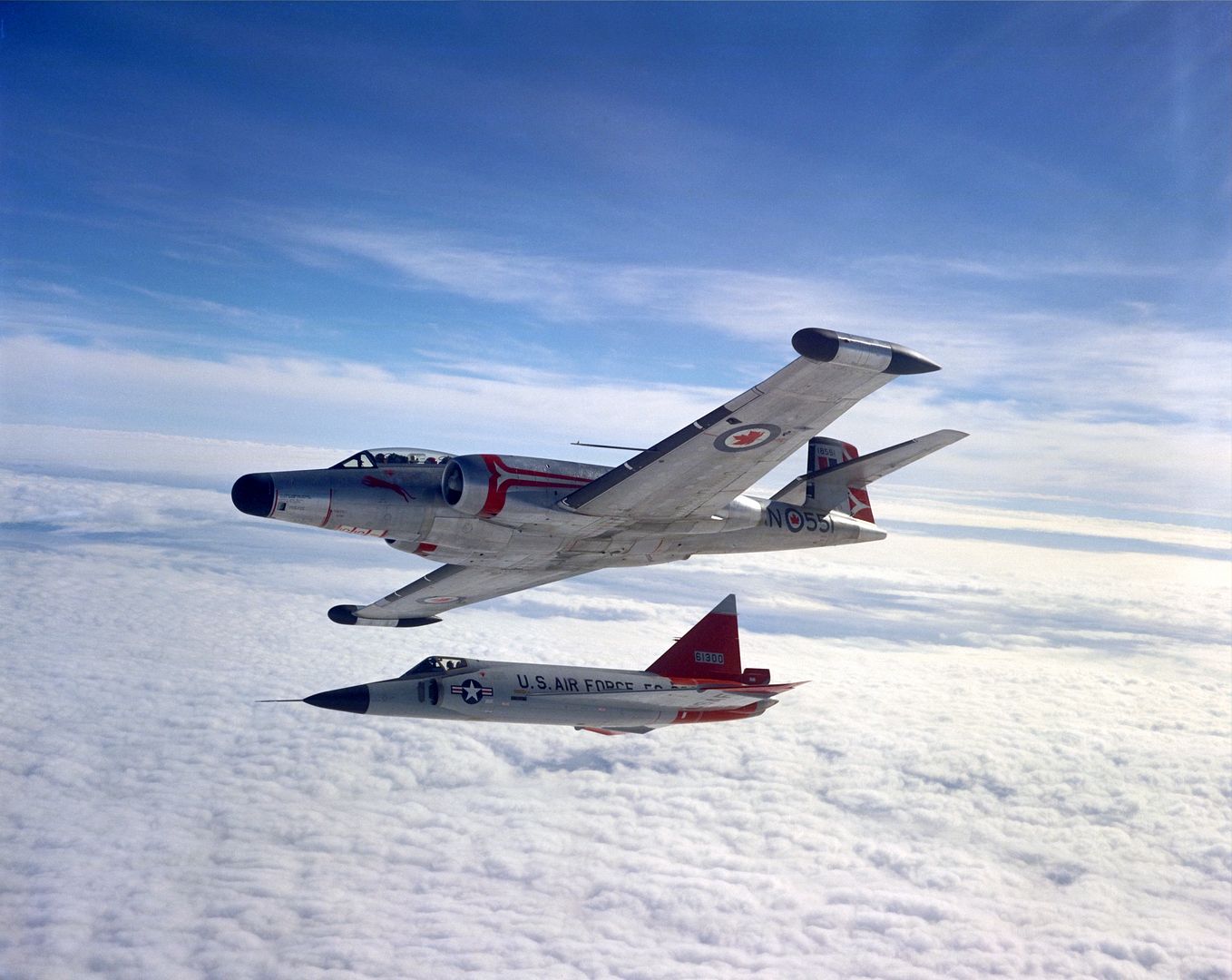
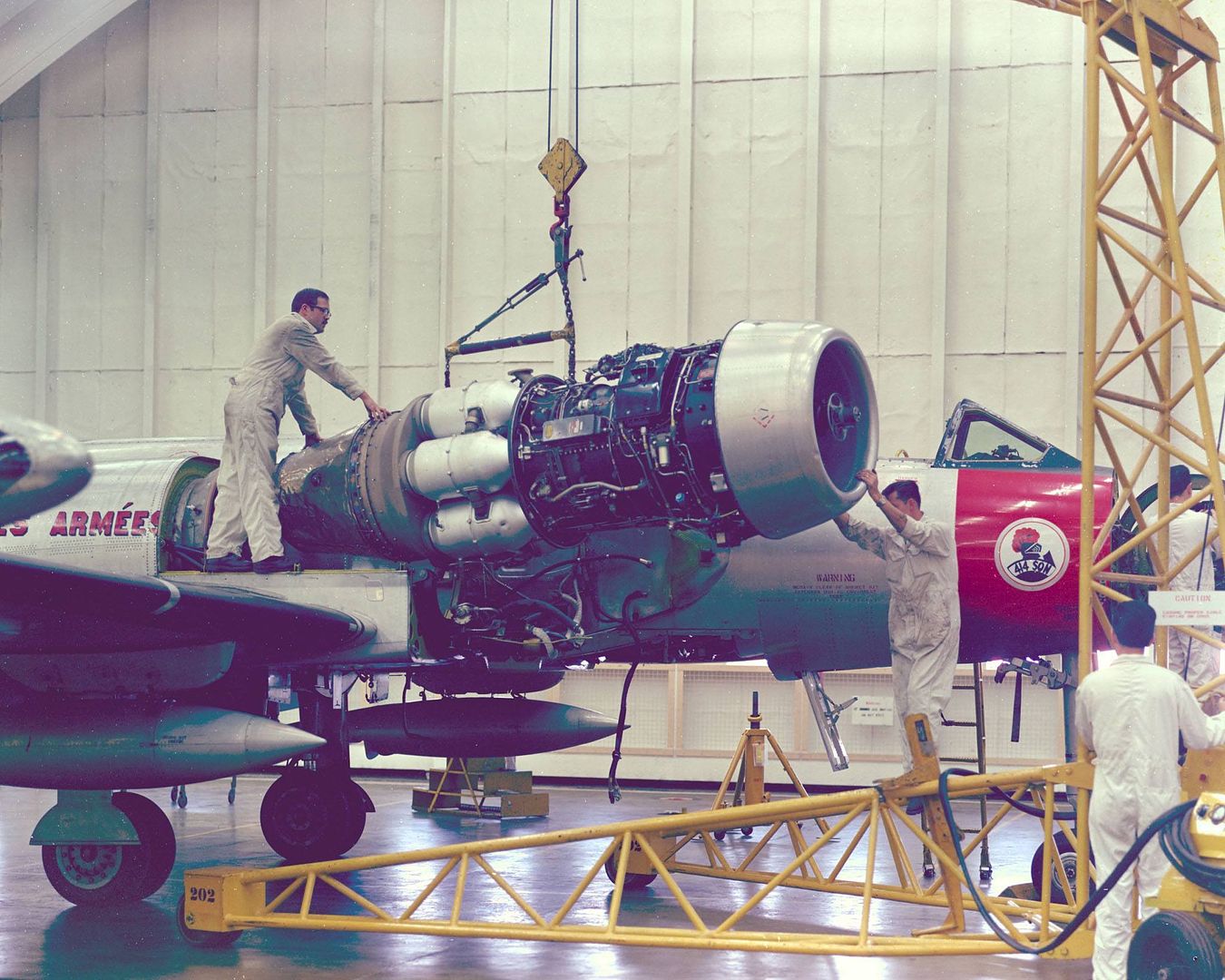
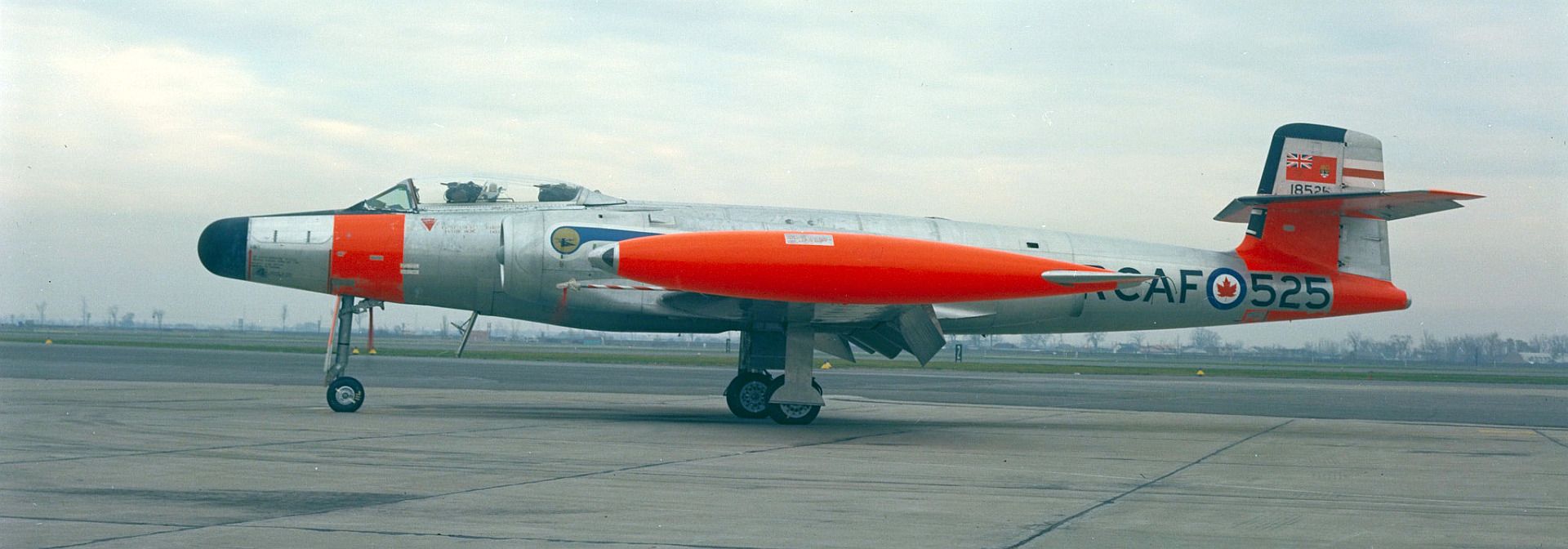
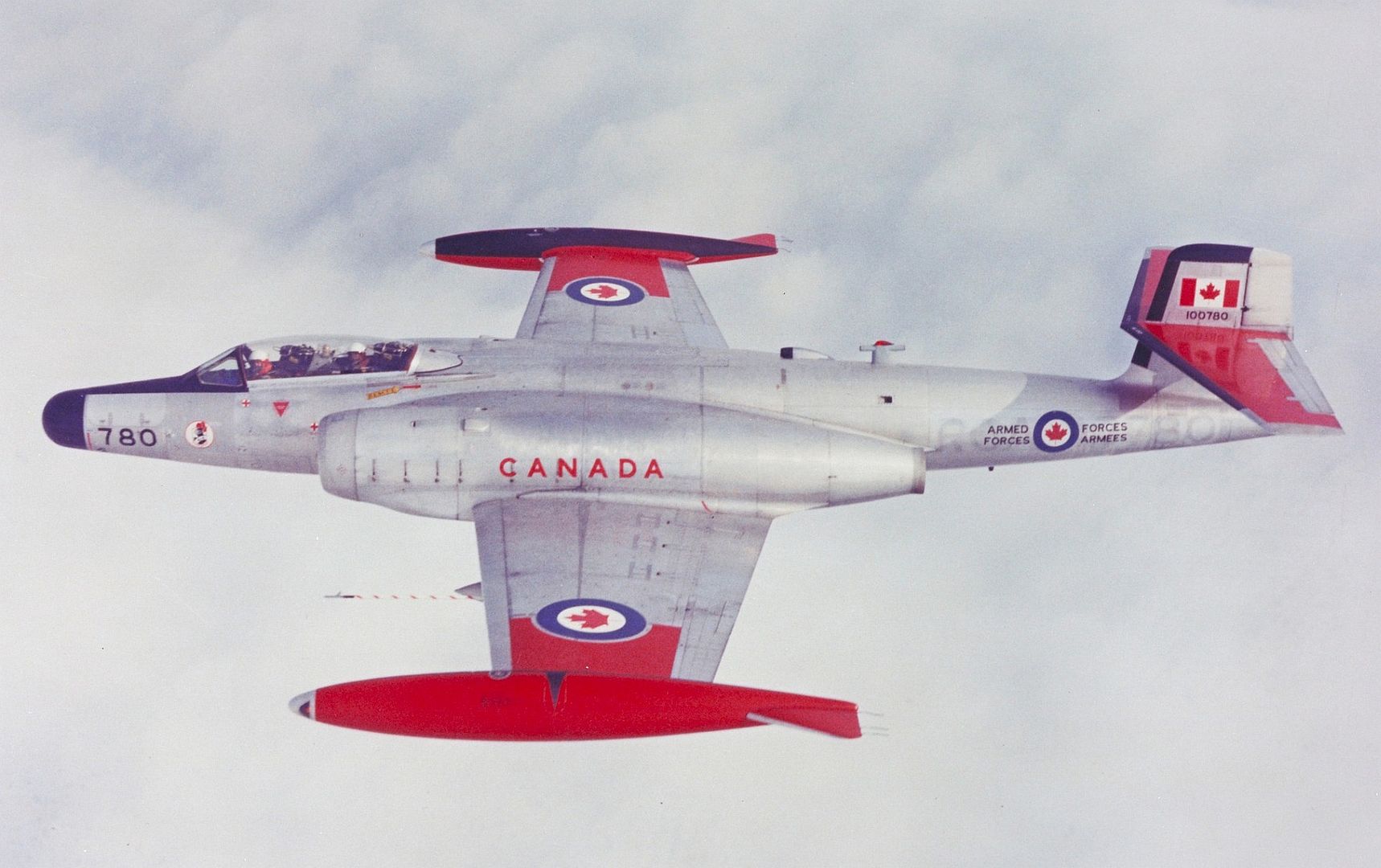
General characteristics
Crew: 2, pilot and navigator
Length: 16.5 m (54 ft 2 in)
Wingspan: 17.4 m (57 ft 2 in)
Height: 4.4 m (14 ft 6 in)
Wing area: 54.9 m? (591 ft?)
Empty weight: 10,500 kg (23,100 lb)
Loaded weight: 15,170 kg (33,450 lb)
Max. takeoff weight: 16,329 kg (36,000 lb)
Powerplant: 2 ? Avro Canada Orenda 11 turbojets, 32.5 kN (7,300 lb) each
Performance
Maximum speed: 888 km/h (552 mph)
Range: 3,200km (2,000mi)
Service ceiling: 13,700 m (45,000 ft)
Rate of climb: 44.5 m/s (8,750 ft/min)
Thrust/weight: 0.44
Armament
Rockets: 2 wingtip pods of 29 x 70-mm (2.75 in) "Mighty Mouse" fin-folding aerial rockets
Post a reply
- Go to Previous topic
- Go to Next topic
- Go to Welcome
- Go to Introduce Yourself
- Go to General Discussion
- Go to Screenshots, Images and Videos
- Go to Off topic
- Go to Works in Progress
- Go to Skinning Tips / Tutorials
- Go to Skin Requests
- Go to IJAAF Library
- Go to Luftwaffe Library
- Go to RAF Library
- Go to USAAF / USN Library
- Go to Misc Library
- Go to The Ops Room
- Go to Made in Germany
- Go to Campaigns and Missions
- Go to Works in Progress
- Go to Juri's Air-Raid Shelter
- Go to Campaigns and Missions
- Go to Works in Progress
- Go to Skinpacks
- Go to External Projects Discussion
- Go to Books & Resources
